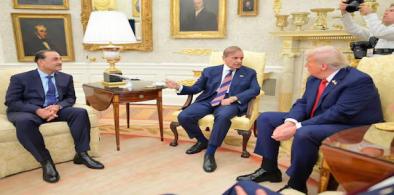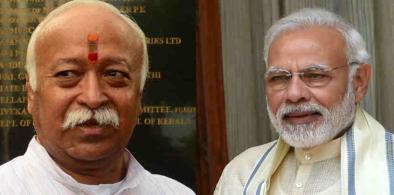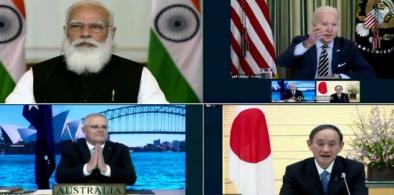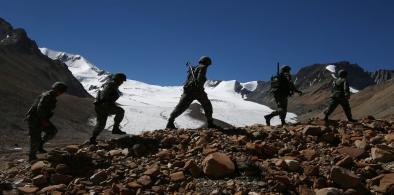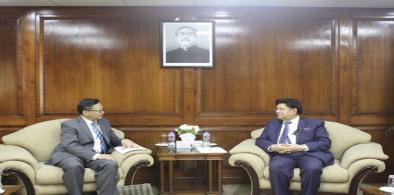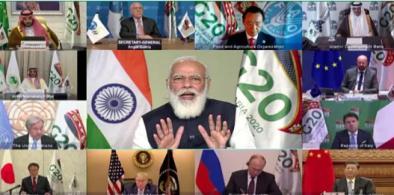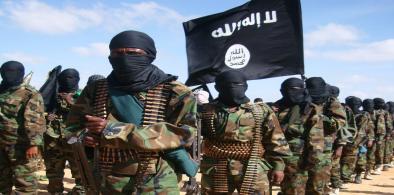The ceasefire announcement on February 25 came just over two weeks after China and India agreed to military disengagement in eastern Ladakh, leading to speculation that the India-Pakistan ceasefire declaration and China-India disengagement plans aren't unrelated incidents, write Harsh Mahaseth and Ananya Shukla for South Asia Monitor
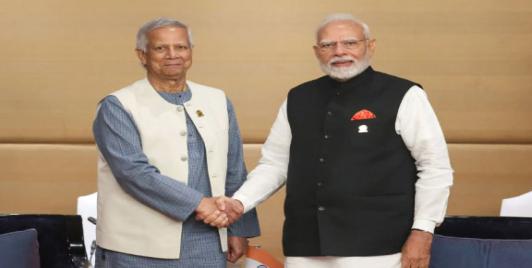
Bangladesh–India Relations at a Crossroads: Needed Recalibration, Not Rupture
The current strains in Bangladesh–India relations should therefore be seen not as an inevitable deterioration, but as a test of diplomatic maturity. Bangladesh and India share more than geography and history; they share a responsibility to ensure that temporary political frictions do not harden into structural mistrust. In a time of regional uncertainty, neither country benefits from a relationship defined by grievance or miscommunication.
A Dangerous Power Grab in Pakistan; Unpredictable Consequences For Region
The 27th Amendment, celebrated by its proponents as a security reform, is in reality a political coup executed through constitutional means. It marks not only Munir’s personal triumph but the institutional victory of the military over all other state authorities. As history warns, empowering any unelected institution above the republic’s elected will invites instability—not strength. Pakistan may soon discover that consolidating military power does not secure the nation’s future, but instead places it at greater risk
How Foreign Digital Influencers Are Tarnishing India’s Global Image
India must now transition from conventional soft-power thinking to visibility governance—the systematic management of how the country appears, circulates, and is emotionally interpreted across global platforms. Failure to do so will leave India’s global image increasingly shaped by commercial incentives outside Indian control.
Afghanistan Should Not Get Caught In The India-Pakistan Strategic Rivalry
The strengthening of Taliban-India ties runs counter to Pakistan’s interests. The more border clashes intensify between the Taliban and Pakistan, the more secure the Kashmir region and the Line of Control (LoC) become for India. Under such conditions, Pakistan will remain preoccupied with its northwestern border, giving India a unique opportunity to consolidate its control over Kashmir and potentially weaken, drive out, or eliminate Kashmiri militant groups
The RSS has reasons to be worried about the BJP
Perhaps even more than the BJP, the RSS must be deeply concerned about the present calamity since it can delay the implementation of its Hindutva project yet again, writes Amulya Ganguli for South Asia Monitor
India’s overwhelmed public health system crying for reforms
The Parliamentary Committee on Health and Welfare, in its recent report, had suggested that the public expenditure on health needs to be enhanced to at least 2.5 percent of GDP in the next 3 years, much of which should be invested in creating and modernising the strained infrastructure, reports V K Varadarajan for South Asia Monitor
Diplomatic ties with China are not in Bhutan's national interest
The underlying reason for Bhutan to keep China at an arm’s length is not India’s strategic influence; rather it emanates from a firm belief that opening diplomatic ties with China is against its national interest, writes Thinley for South Asia Monitor
Despite uncertainties over Afghanistan, US-India ties will grow stronger under Biden
It is likely that under the Biden administration US-India relations will grow stronger and will have more routes to work on a range of issues -- free and open Indo-Pacific, restoring peace in Afghanistan, arms control, countering aggressive behavior of China and climate crisis with stress on multilateralism, writes Indu Saxena for South Asia Monitor
Chinese land-grab in Bhutan and India: Timid responses won't work with Beijing
There have also been reports that other areas of Western Bhutan have been gradually encroached by China to secure access to the border with India, writes Lt Gen Prakash Katoch (retd) for South Asia Monitor
Afghanistan: Challenges of peace through regional consensus
The region, overall, has gone through a major strategic realignment with the increasing influence of China, and its ties with Pakistan. Also, unlike the 90s, there exists multi-dimensional international cooperation on the issue of Afghanistan today, writes Shraddha Nand Bhatnagar for South Asia Monitor
Dhaka's public admonition by Chinese envoy: Strategic fallout of an expanding profile in South Asia
The Chinese footprint in the South Asian region has been steadily increasing, while that of India is being diluted and all the SAARC (South Asian Association for Regional Cooperation) nations are differently dependent on Beijing for a mix of political, economic, trade and military support, writes Cmde C Uday Bhaskar (retd) for South Asia Monitor
The pandemic: Bringing out the best, and the worst, in us
If it’s any solace, this dreadful time has given rise to an unnamed bond among strangers—call it humanity, altruism, empathy—but it’s helping many of us stay afloat, writes Azera Parveen Rahman for South Asia Monitor
Vaccination in South Asia: India still remains the best hope
While India must resume supplies to its neighbors, there is much that it can also learn from some of their best practices, including Bhutan, writes N Chandra Mohan for South Asia Monitor
Afghanistan can trigger multidimensional fallout on South Asian politics
Pakistan’s 'all-weather friend' China has intensified communication with the Taliban. Afghanistan is very significant for China for Its Belt and Road Initiative, writes Md. Ishtiak Hossain for South Asia Monitor
South Asia and COVID-19: Impact of school closures on children’s learning
South Asia - which had the longest period of school closure - could face a learning crisis which will set us back by a decade, writes Partha Pratim Mitra for South Asia Monitor
For India to be a global leader, it must deliver at home first
India's foreign policy mandarins know more than anyone else that altruism does not exist in international relations and diplomacy must be conducted on the basis of realpolitik acting only in pursuit of their self-interest, writes Lt Gen Yash Malhotra (retd) for the South Asia Monitor
Vaccination and vaccine purchase politics: Can India attain herd immunity?
But most experts agree that the country can reach ‘herd immunity’ if 70 to 80 percent of the population is fully immunised. That comes to a population of 1.05 billion, for whom 2.10 billion doses are needed, writes Vinod Aggarwal for South Asia Monitor
Is the US set to repeat past mistakes in Afghanistan?
It would be interesting to know how American security experts view the threat perceptions from the numerous affiliates of the bodies in the Afghanistan-Pakistan region, some of whom target India, writes Mahendra Ved for South Asia Monitor


